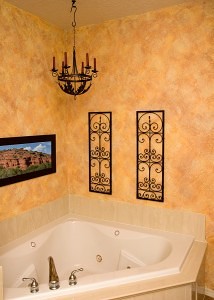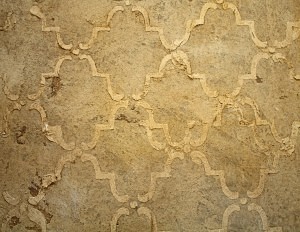Faux painting is an artisan technique used to give your walls a unique look and feel. Homeowners love to incorporate faux finishing in their homes for several reasons. First and foremost, faux finish techniques can imitate the look of aged or distressed walls, and therefore give your home the same old-world character of a Tuscan villa or French mansion of the distant past. Secondly, faux finishing can be used to disguise one surface as another, thus turning a plaster pillar in your home into one that looks like it is made of pure marble or granite. Lastly, many homeowners like faux finish application for its ability to incorporate multiple hues and tones to create a completely customized color for their favorite room. If you are dreaming of a unique and artisan look for a room or wall or architectural feature in your home, faux painting can help that dream come true!
Faux Painting Techniques & What They’ll Look Like On Your Walls
Your Faux Finish Guide
 A faux finish to any part of the inside or outside of your house can truly the change the look and feel of your home. The faux, French for “false”, finish is a way of simulating different textures found in and out of nature by the use of paints: wood, stone or even different types of metal. The technique can be given to any surface, including interior or exterior walls, beams, floors, furniture, molding, and mantels, to name just a few. The overall effect makes a bold statement.
A faux finish to any part of the inside or outside of your house can truly the change the look and feel of your home. The faux, French for “false”, finish is a way of simulating different textures found in and out of nature by the use of paints: wood, stone or even different types of metal. The technique can be given to any surface, including interior or exterior walls, beams, floors, furniture, molding, and mantels, to name just a few. The overall effect makes a bold statement.
Graduated Painting
In this art form, the faux finish begins and ends with the same color. Though this could be used on an outside wall, it is normally found in the rooms inside. At the bottom, the color is at its fullest, deep and rich. As your eyes follow the color upward, the color becomes lighter and lighter. It gives an impression of looking up toward the sun or down into the depths. The graduated painting may have a room appear bigger and more airy.















